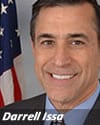If the US Commodity Futures Trading Commission (CFTC) does little to change its proposed rules for margin requirements on uncleared swaps trades, investors should brace themselves for increased collateral costs, according to industry observers.
“Though there are differing recommendations, uncleared swaps trades are likely to be required to post margin at a level that is a multiple of cleared swaps, which obviously increases the opportunity cost of capital,” says E. Paul Rowady Jr, senior analyst at research firm Tabb Group.
The proposed rules will result in an increase in the amount of collateral required from the buy-side trading in uncleared derivatives, agrees Paul Sutters, a manager at global management consultancy Investance. “Combined with additional demand for collateral stemming from central clearing of standardised OTC derivatives, buy-side firms will need to come up with a significant amount of high-quality assets to post with central counterparties or their dealer.”
To meet this demand, many buy-side institutions will need to engage their dealers or custodians to transform available assets, he adds. “This will obviously involve additional costs that could end up being quite substantial.”
When the CFTC first proposed initial- and variation-margin requirements for uncleared swaps traded by swap dealers and major swaps markets participants on 28 April 2011, the regulator stated in its proposal that its sought to establish margin requirements that were at least as stringent as those for cleared swaps to meet its statutory mandate under the Dodd-Frank Wall Street Reform and Consumer Protection Act.
It should not come as a surprise that the regulator turned to the initial- and variation-margin models used by central counterparties (CCPs) for decades as models for the uncleared swaps trading environment.
Widespread concerns
Although many of the more than 150 submitted comments made by industry participants and investors during the 17-month comment period, which ends 14 September, applaud the regulator on its intention, several high-profile firms and individuals have said the margin rules are too strict and will have a detrimental effect on the US swaps market.
 “Based on the new rules, I expect that a
large share of this new collateral will be held in the form of Treasuries and
US Agencies debt,” wrote US Congressman Darrell Issa, chairman of the US House
Committee on Oversight and Government Reform, to the CFTC. “Currently, about US$4
trillion, or nearly 40%, of existing Treasury debt acts as collateral to deals
in the repurchase, futures and swaps markets. The expansion of collateral
requirements will likely add trillions of dollars of demand to the Treasury
markets. Increased demand for Treasury bonds should place downward pressure on
yields, robbing savers to reward debtors as inflation eats away at wealth.”
“Based on the new rules, I expect that a
large share of this new collateral will be held in the form of Treasuries and
US Agencies debt,” wrote US Congressman Darrell Issa, chairman of the US House
Committee on Oversight and Government Reform, to the CFTC. “Currently, about US$4
trillion, or nearly 40%, of existing Treasury debt acts as collateral to deals
in the repurchase, futures and swaps markets. The expansion of collateral
requirements will likely add trillions of dollars of demand to the Treasury
markets. Increased demand for Treasury bonds should place downward pressure on
yields, robbing savers to reward debtors as inflation eats away at wealth.”
Douglas Hodge, managing director and COO of PIMCO, also calls for the CFTC to broaden the range of acceptable collateral to include high-grade corporate debt or well-understood and liquid structured credit instruments with the appropriate discounts or ‘hair cuts’, in his correspondence with the regulator. “[T]he Proposed Rules are overly rigid and onerous in both the amounts and types of collateral that they would require parties to post, and, as a result, are not ‘appropriate for the risk associated’ with non-clear swaps. In their current forms these rules would unfairly punish those long-term investors who may not have the option to engage in the cleared swap market.”
Swaps dealers like J.P. Morgan Chase questions the regulator’s ability to write such a restrictive definition of eligible collateral.
“Section 731 [of the Dodd Frank Act] specifically allows the use of non-cash collateral if such use is determined to be consistent with (i) preserving the financial integrity of markets trading swaps; (ii) preserving the stability of the United States financial systems,” wrote Don Thompson, managing director and associate general counsel at J.P. Morgan Chase in his own comment letter. “The pervasive current use of other types of securities as collateral, with evidence of credit concerns resulting therefrom, evidence that the financial integrity of the markets would be best preserved through an expanded definition of eligible forms of margin...”
Despite the industry’s numerous requests to relax some of the collateral requirements, neither Tabb’s Rowady or Investance’s Sutters are aware of any counterproposal coming from the industry.
If there was one, Sutters doubts it would gain traction in today’s environment: “The Dodd-Frank Act in the US mandates collateralisation of uncleared OTC derivatives, so any counter-proposal will require legislative change.”
Although Rowady does not expect to see radical change between the proposed and final version CFTC’s margin rules for uncleared swaps trades, “It’s entirely possible that coordination among the global regulators will lead to additional delays.”
Swap participant registration
Meantime, CFTC staff have provided some clarification on the timing of when entities will be required to register as swap dealers.
Swap dealer registration regulations come into effect 12 October, and firms with more than the de minimis level of dealing must register no later than two months after the end of the month in which they surpass the de minimis level.
The test means that on 12 October all firms start at zero and once they hit the de minimis level of swaps trading – $8 billion normally or $25 million if you are a governmental entities or pension fund. Once the level is triggered, a firm has 60 days from the end of the month to register.
For instance, if a firm reaches $8 billion in swap dealing the day after the 12 October effective date, it must register within two months after the end of October – 31 December.
Some foreign regulators and market participants have questioned the extraterritorial nature of the method for calculating the de minimis level.
